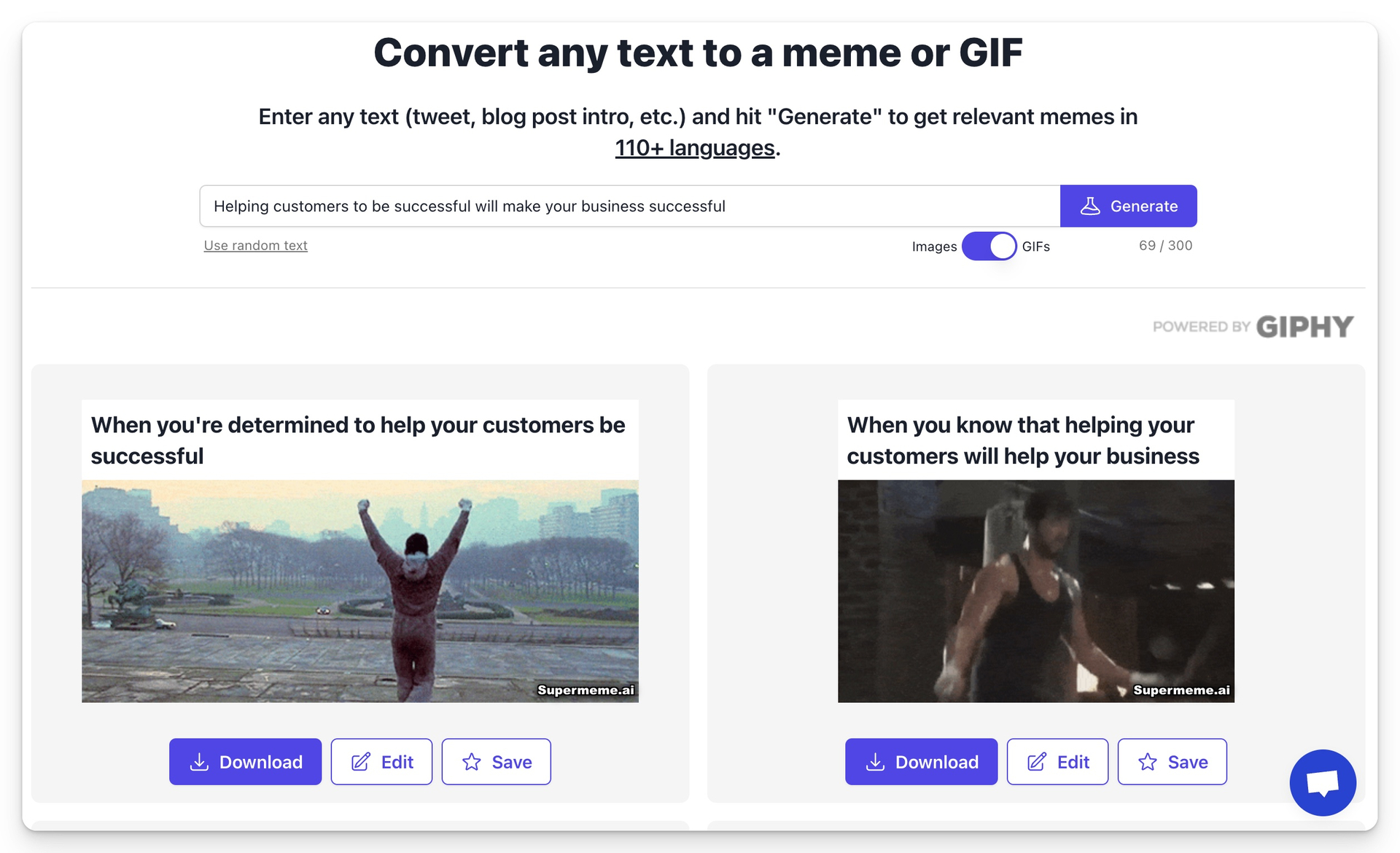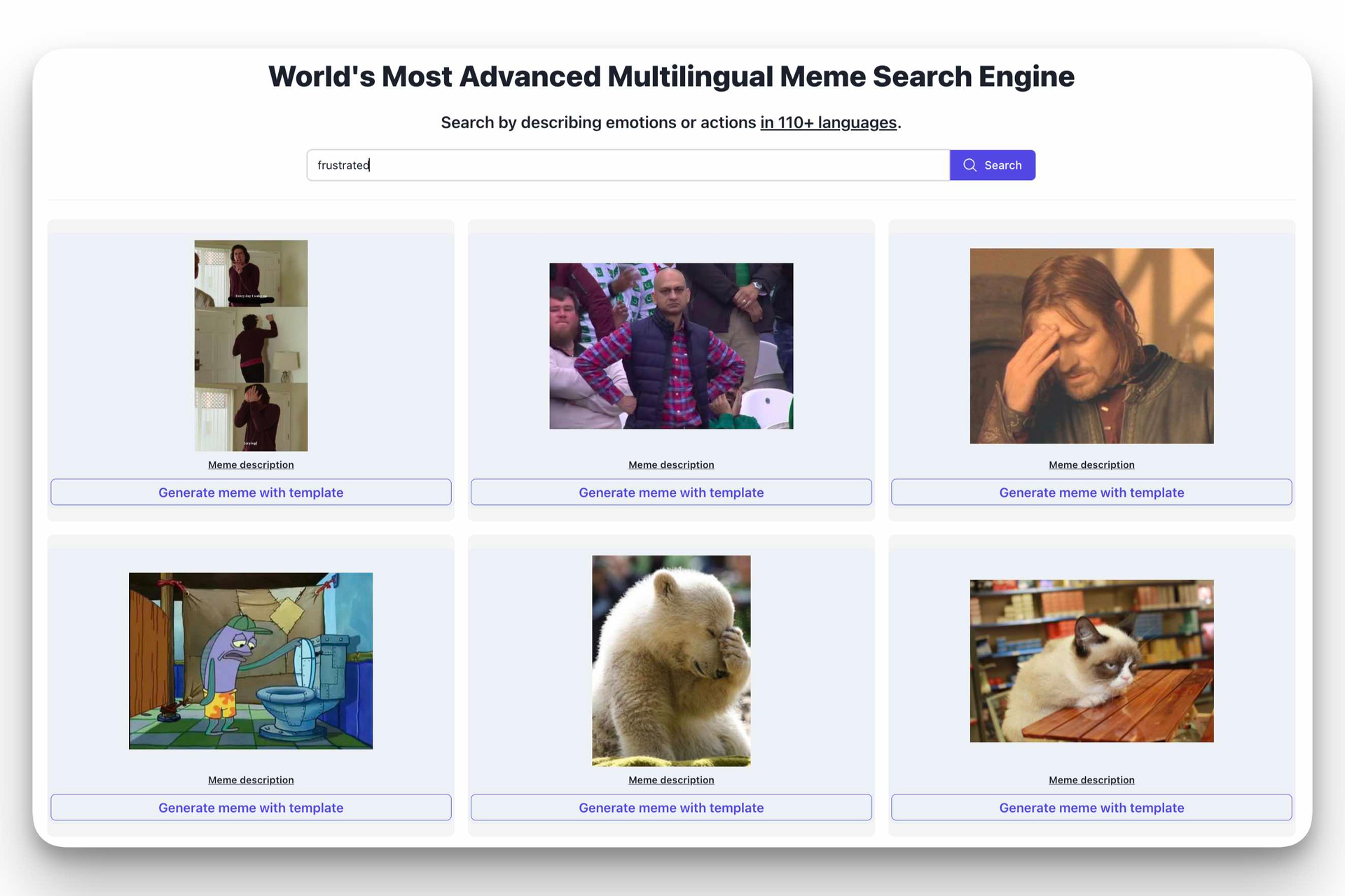GIF Meme Generator: Understanding Memes vs GIFs
Memes and GIFs are popular forms of online communication, each with unique characteristics. This guide explores their differences and use cases to help you create more effective digital content.
What's the Difference Between a Meme and a GIF?
GIFs (Graphics Interchange Format) are short, looped animations or videos used to express emotions or ideas in online conversations. Memes, on the other hand, are images, videos, or phrases that spread rapidly, often featuring humorous or ironic captions related to pop culture or current events.
Key Differences Between Memes and GIFs
Memes and GIFs are both popular forms of internet content, but they serve different purposes. Memes are typically used to make humorous comments or jokes, while GIFs are often used to illustrate a point or emotion. Let's take a closer look at the differences between the two:
- Purpose: The primary difference between memes and GIFs is their purpose. Memes are primarily used for humor and satire, while GIFs are used to visually enhance a message or express an emotion.
- Content: Memes are usually created by combining an image with text in a manner that is intended to be humorous or satirical. The text is often a witty comment or punchline that adds a layer of humor or irony to the image. On the other hand, GIFs are usually short animated clips that convey a message or emotion.
- Format: Memes are typically static images that can be easily shared on social media platforms. They can be created using various online tools or mobile apps. In contrast, GIFs are animated images that can be created from videos or series of images.
- Tone: Memes are often humorous or satirical and are designed to make people laugh. They can also be used to poke fun at a particular topic or person. In contrast, GIFs are often used to convey emotions such as happiness, sadness, frustration, or excitement.
- Context: Memes are usually created in response to a particular event, trend, or situation. They are often shared widely on social media platforms and can become viral quickly. In contrast, GIFs are often used in chats or conversations to express a particular emotion or reaction.
Using Memes and GIFs in Marketing
Memes and GIFs have become increasingly popular in the world of marketing as they offer a unique way to engage with your audience. They allow marketers to showcase their brand's personality in a fun and humorous way, while also providing a visual representation of their message. In this article, we will explore how memes and GIFs can be used in marketing, and provide you with some tips on how to use them effectively.- Know your audience: The first step to using memes and GIFs in your marketing is to know your audience. Make sure that the memes and GIFs you choose are relevant and relatable to your target demographic. If your audience is primarily made up of millennials, for example, you may want to use memes that reference popular culture or current events.
- Keep it simple: When it comes to using memes and GIFs in your marketing, less is often more. Stick to simple, easy-to-understand visuals that convey your message clearly. Avoid cluttering your materials with too many memes or GIFs, as this can be overwhelming and distracting for your audience.
- Stay on brand: While memes and GIFs can be a great way to show off your brand's fun and playful side, it's important to make sure that they are still consistent with your overall brand identity. Make sure that the memes and GIFs you use align with your brand's values and messaging.
- Use humor carefully: Humor can be a powerful tool in marketing, but it's important to use it carefully. Make sure that any jokes or memes you use are appropriate and won't offend your audience. Avoid using humor that relies on stereotypes or other potentially offensive material.
- Experiment and test: Finally, don't be afraid to experiment with different types of memes and GIFs to see what resonates best with your audience. Test different visuals and messaging to see what generates the most engagement and adjust your strategy accordingly.
Leveraging GIF Memes in Social Media
If you want to engage with your followers on social media, GIF memes can be a great way to do it. Not only are they entertaining and easy to share, but they can also help start conversations and create buzz around topics that your followers are interested in. In this blog post, we will show you how to use GIF memes effectively in your social media strategy.
- Step 1: Choose the Right Platform: The first step in using GIF memes in your social media strategy is to choose the right platform. While GIFs can be shared on almost any social media platform, some platforms are better suited for them than others. For example, Twitter and Facebook are great platforms for sharing GIFs because they support them natively. On the other hand, platforms like Instagram and LinkedIn may not support GIFs natively, so you may need to use a third-party tool to share them.
- Step 2: Find the Right GIF Memes: The next step is to find the right GIF memes to use in your social media strategy. There are many websites and apps that offer a wide range of GIFs that you can use for free. Some popular options include Giphy, Tenor, and Imgflip. When choosing GIF memes, make sure they are relevant to your brand and the message you are trying to convey.
- Step 3: Create Your Own GIF Memes: If you can't find the right GIF memes for your social media strategy, you can always create your own. There are many online tools that allow you to create custom GIFs. You can also leverage AI to generate GIF memes using Supermeme.ai. Creating your own GIF memes can be a great way to promote your products or services in an entertaining and memorable way.
- Step 4: Add GIF Memes to Your Social Media Posts: Once you have chosen the right GIF memes or created your own, it's time to add them to your social media posts. To do this, simply upload the GIF meme to your social media platform of choice or copy and paste the link to the GIF meme into your post. Make sure to add relevant hashtags and captions to your post to increase engagement.
- Step 5: Analyze Your Results: Finally, it's important to analyze the results of your social media strategy to see how well your GIF memes are performing. Most social media platforms offer analytics tools that allow you to track engagement metrics like likes, comments, and shares. Use these metrics to see which GIF memes are resonating with your audience and adjust your strategy accordingly.


